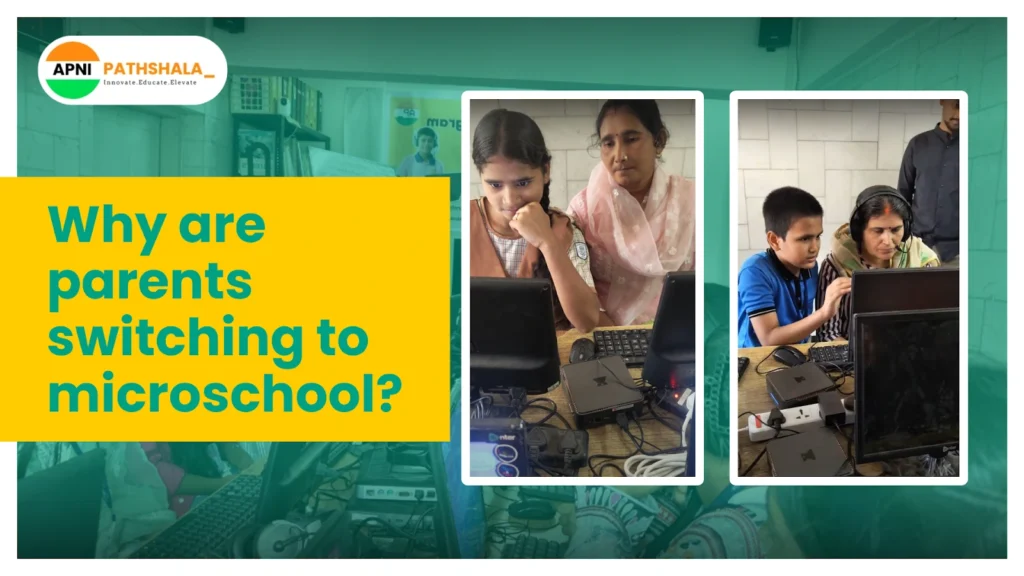Why are parents switching to microschool?

The Education Shift No One Saw Coming Let’s be real: traditional schooling is failing a lot of kids. Parents see it. Teachers see it. And most importantly, kids feel it. The rigid schedules and overcrowded classrooms aren’t working anymore. Some students feel completely lost, struggling to keep up. Others are bored out of their minds because they’re ahead but forced to learn at the same pace as everyone else. And let’s not even get started on the stress, pressure, and outdated teaching methods that leave kids memorizing facts instead of actually learning. So, what’s the solution? A growing number of parents are walking away from the system and turning to microschools—small, personalized learning communities that put the child first. And no, this isn’t just some “education trend” that’ll fade away in a few years. It’s a full-blown movement that’s quietly reshaping the future of learning. But why are parents making the switch? And more importantly, should you? What Is a Microschool? A microschool is exactly what it sounds like. A small school. With just 5 to 15 students, it offers a flexible, personalized learning experience where kids actually enjoy education. Some microschools run from homes, others in shared spaces, but they all have one goal: to move beyond the rigid, outdated school system and focus on real learning. Here, kids of different ages learn together, guided by a mentor rather than a strict teacher. The focus isn’t on memorizing textbooks for exams—it’s about understanding concepts, solving problems, and building skills that matter. And trust me, the parents are loving it. Why Are Parents Choosing Microschools? 1. Personalised Education Every kid is different. Some love numbers, some like working on creative projects, and some need extra time with certain subjects. However, traditional schools expect all kids to learn the same way and at the same speed. Isn’t that an insult to your child’s learning and his potential?. On the other hand, microschools completely change the narrative. They: If children are fascinated by space, they might build telescopes or visit an observatory rather than memorize facts about planets from textbooks. 2. Small Classes = More Personal Attention Ever heard a parent say, “My child isn’t getting enough attention in school“? That’s because most teachers are overwhelmed, managing 30+ students in a single classroom. Microschools keep things small. With just a handful of students, teachers can actually teach instead of just managing a crowd. That means: Fact: Studies show that smaller class sizes lead to better academic performance, higher confidence, and more engagement. No surprise there. 3. Flexible Curriculum Forget the old-school schedule of sit-down lectures from 8 AM to 3 PM. Microschools allow for flexible, interest-driven learning. Students might: Finland, one of the world’s top-ranked education systems, follows a flexible, student-led approach—something microschools mirror. No doubt, they rank so high on the happiness index. 4. Practical Learning Let’s be honest—most homework isn’t helping kids learn. It’s just extra work. And high-pressure exams? They measure test-taking skills, not actual intelligence. Microschools focus on real understanding instead of rote memorization. Students learn by doing, not just reading and repeating. Instead of writing a 10-page essay on pollution, a student might Interview environmental experts, document pollution in their neighborhood,and develop a real-world solution. 5. Skill Learning Ask any adult, and they’ll tell you—school didn’t prepare them for real life. Microschools make sure kids don’t grow up Googling “how to do taxes” or “how to get a job.” Microschools prioritize relevant, future-ready skills, including: Some microschools have students build startups, design apps, or manage real-world budgets, skills that provide actual value beyond school. Should YOU Switch to a Microschool? Microschools aren’t just for a certain type of family. They’re for: That said, microschools aren’t for everyone. Consider these factors before making the switch: If these challenges don’t seem like a roadblock, a microschool might be the best decision you ever make for your child. Final Thoughts Microschools aren’t just a trend, they’re the future of education. Parents want something better for their kids, and microschools deliver: Personalized learning—Tailored to each child’s unique strengths and interests.Flexible schedules—No rigid bells, no forced learning at fixed times.Real-world skills—A focus on problem-solving, creativity, and hands-on learning.A supportive community—Smaller class sizes, deeper friendships, and stronger teacher-student bonds. If you’re tired of the outdated school system and want to give your child an education that actually prepares them for life, it’s time to explore something new. Ready to take the first step? Explore microschools with Apni Pathshala today!
